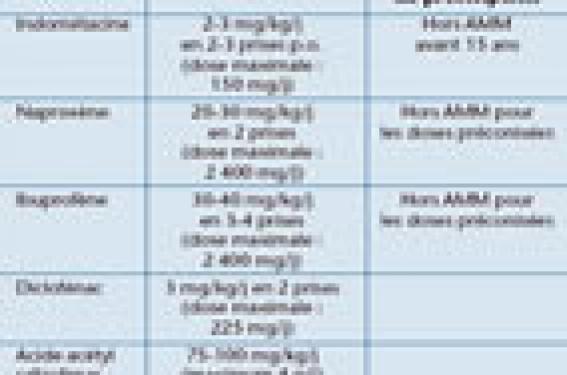There clinical toxicology faces new challenges with the emergence of innovative substances on the market. These emerging products, often associated with effects similar to illicit drugs, complicate the task of health professionals. THE new psychoactive substances (NSP) are distinguished by their diversity and their increasing accessibility, leading to a more complex health issue. At the same time, technological advances in toxicology allow the development of more precise detection methods, essential for the management of poisonings. The rise of concerns related to endocrine disruptors and pollutants also reveals a panorama where public health must constantly adapt. These transformations require increased vigilance and a systematic response to protect the population.
There clinical toxicology is defined as the branch of toxicology dedicated to the study of the adverse effects of chemical substances on human health, generally in a clinical context. With the rapid evolution of our environment and the emergence of new substances, notably synthetic chemicals, clinical toxicology must constantly adapt to meet the new challenges that arise. THE emerging substances encompass a wide range of chemical compounds, often associated with real public health issues, such as the increase in cases of poisoning and the resulting medical complications.
Emerging substances include in particular new psychoactive substances (NSP), which mimic the effects of common illicit drugs such as amphetamines, ecstasy and cocaine. Their varied chemical structure and often unpredictable mode of action pose a significant risk to both users and health care systems. These substances are generally easy to produce, which fuels their proliferation on the black market, making their detection and regulation particularly difficult.
As part of scientific developments, modern detection techniques have been developed, such as mass spectrometry, allowing more in-depth analysis of substances at minute concentrations. These technological advances are proving essential for the rapid detection of emerging substances and the assessment of their toxicity. Furthermore, the emergence of nano-emulsions and other forms of advanced chemicals require special attention in toxicological research.
The toxicological aspects of emerging substances are not only limited to the sphere of drugs, but also include endocrine disruptors, which pose important public health questions. These compounds, present in many everyday products, interfere with the hormonal system and can cause various extremely serious complications, both on an individual and collective level. Society is thus becoming more and more vigilant in the face of these issues, leading to increased awareness of the risks associated with them.
Deaths attributable to poisoning, particularly those linked to opioids, highlight the urgency of an integrated approach in clinical toxicology. According to recent statistics, these deaths are experiencing a significant increase, which calls for more effective prevention, treatment and research measures. This demonstrates not only the lack of control over the consumption of these substances, but also the need for targeted training for health professionals in order to quickly and effectively identify cases of intoxication.
New challenges in clinical toxicology also come with the need for interdisciplinary collaboration. Public health networks, toxicologists, researchers and legislators must work closely to develop strategies to respond to the threats posed by emerging substances. For example, joint initiatives can provide a better understanding of consumption dynamics, facilitate access to care and develop appropriate treatments.
The implementation of national strategies on emerging chemical elements is crucial. It appears necessary to design awareness programs regarding new psychoactive substances and other toxic agents for the public, while developing an approach focused on research and continuous evaluation of substances in circulation. These programs should also include training of health professionals to enable them to recognize signs of poisoning and act quickly in emergency situations.
In this context, the role of public health institutes is preponderant. They must be able to monitor emerging substance use trends and systematically assess the health risks they pose. This monitoring not only makes it possible to anticipate public health problems, but also to adjust health policies accordingly, particularly through information and prevention campaigns.
It is also relevant to address the environmental impact of emerging substances. The increasing use of chemical compounds in various sectors, including agriculture and industry, raises major concerns regarding their bioavailability and their ability to persist in the environment. These elements can have cumulative effects on human health, increasing interest in environmental toxicology, which studies the interactions between chemical substances and biological systems.
Ultimately, clinical toxicology faces significant challenges related to emerging substances. To meet these challenges, a multidisciplinary approach and collaborative is essential. Technological advances provide new avenues for research and detection of toxins, while increased awareness among healthcare professionals and the public could help mitigate the adverse health impacts of emerging substances. Interactions between different scientific disciplines and concerted actions by institutions are essential to ensure an effective response to the complex issues generated by these substances.
Clinical toxicology faces increasing challenges linked to the emergence of new substances. These substances, often synthetic, mimic the effects of illicit drugs and pose significant risks to public health. Health professionals must prepare to identify, evaluate and treat poisoning linked to these products in order to reduce the health consequences. This article offers recommendations to better manage these contemporary issues.
Identification and monitoring of emerging substances
It is crucial to put in place systems of monitoring and identification for emerging substances. Databases should be created and continually updated to include information on new psychoactive substances (DK) and their effects. Laboratories need to improve their ability to detect these substances using advanced methods such as mass spectrometry. This technology makes it possible to quickly determine the presence of specific chemical compounds in biological samples.
Risk assessment and public information
The evaluation of risks associated with these substances must be a priority. Healthcare professionals must receive continuing education to understand the properties and effects of NPS. In addition, it is essential to inform the public about the dangers of uncontrolled consumption of these substances. Awareness campaigns, including the use of social media, can help educate the population about risks and harm reduction practices.
Multidisciplinary approach to poisoning management
Poisoning management requires an approach multidisciplinary involving toxicologists, doctors, pharmacists and psychologists. These professionals must collaborate to establish standardized treatment protocols adapted to the specificities of poisoning by emerging substances. The use of specific antidotes and access to appropriate emergency care are essential to minimize adverse effects on patients’ health.
Research and development of new treatments
It is also necessary to encourage the research on the long-term effects of emerging substances. Clinical studies must be carried out to understand the mechanisms of action of these drugs and develop effective treatments in the event of intoxication. Research should also focus on developing new antidotes that can counter the effects of NPS, thereby helping to strengthen public health measures.
International collaboration and public policies
The global nature of the illegal drug market imposes a international collaboration. Countries must exchange information on trends related to the consumption of emerging substances and harmonize public policies to better combat this phenomenon. Developing appropriate regulations and laws to counter the production and distribution of these substances is essential to protect public health.
By taking these recommendations into account, health professionals and decision-makers will be able to better address the growing challenges posed by emerging substances in clinical toxicology. Vigilance, ongoing training and cooperation are the keys to effective management of this problem.






